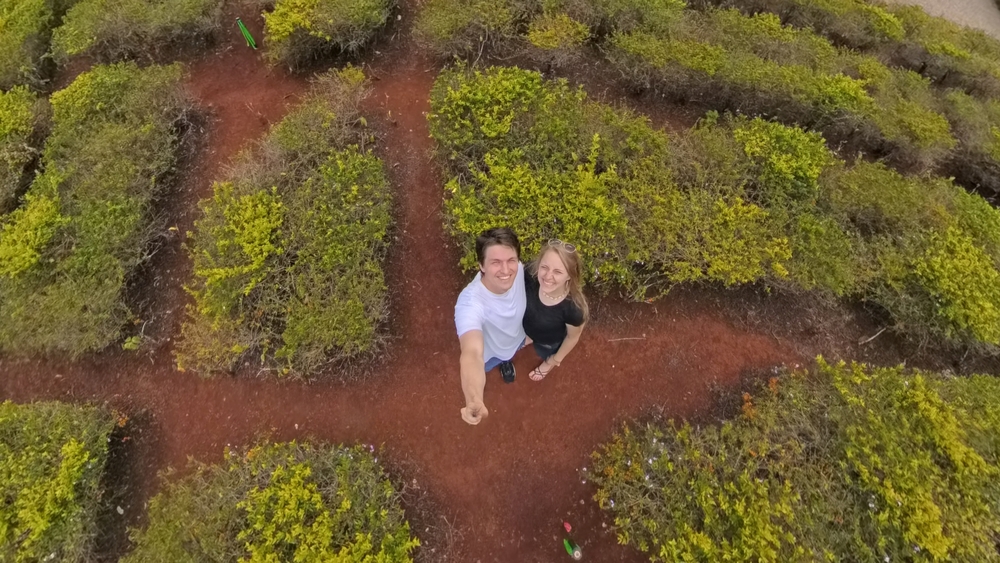On Oahu’s North Shore, the Pineapple Garden Maze at Dole Plantation in Wahiawa, Hawaii, is one of the world’s largest hedge mazes and a distinctive Hawaiian attraction. The plantation itself traces its roots back to the late 19th century when James Dole, known as the “Pineapple King,” established his pineapple empire in Hawaii. His efforts helped transform the islands into a global leader in pineapple production, shaping both the local economy and the perception of Hawaii as a tropical paradise associated with this golden fruit.
During the 20th century, the pineapple industry became a vital part of Hawaii’s identity, with workers from China, Japan, the Philippines, and Portugal contributing to the plantations, resulting in the diverse cultural heritage that defines the islands today. Though large-scale pineapple farming has since declined in Hawaii, the Dole Plantation remains a reflection of this agricultural past, preserving its legacy through interactive experiences like the Pineapple Garden Maze.

Dole Plantation: The Maze by Smart Destinations licensed under CC BY-SA 2.0
Spanning over three acres, the Pineapple Garden Maze is a mixture of horticulture and design. Shaped like a giant pineapple, this vast labyrinth stretches for two and a half miles, winding through dense hedges made up of lush native and tropical plants. Unlike traditional hedge mazes, which focus solely on navigation, this maze includes hidden checkpoints that challenge visitors to explore and strategize their way through its intricate paths.
The use of Hawaiian plants in the maze further deepens its connection to the island’s natural beauty, showcasing the biodiversity that has flourished in the Hawaiian archipelago for centuries. Whether guests choose to challenge themselves by racing to solve it in record time or simply enjoy a leisurely walk, the experience immerses them in the lush greenery that covers much of Oahu’s inland regions.
Located in Wahiawa, about an hour’s drive from Honolulu, the Dole Plantation is easily accessible by car via the H-2 freeway. Many visitors also arrive as part of organized island tours that explore Oahu’s North Shore, allowing them to combine their visit with nearby beaches and cultural sites, such as Waimea Valley, which preserves Hawaiian botanical traditions and sacred places. Public transportation options include TheBus, Oahu’s public transit system, which connects Honolulu to Wahiawa. Despite its somewhat inland location, the plantation has long been a popular stop for tourists, offering a distinctive way to experience Hawaii’s pineapple history while embracing the spirit of exploration.
As visitors navigate through the maze’s tall, green hedges, they encounter designated stations along the way, each serving as a checkpoint that encourages exploration and discovery. Completing the maze is both a challenge and a rewarding journey, with the fastest recorded times posted at the entrance for those wanting to test their skills. The sense of adventure that comes with solving the maze reflects the Hawaiian value of “hukilau” — bringing people together in shared experiences, much like the traditional practice of fishing cooperatively with large nets.

Beyond the maze, the plantation offers a variety of additional attractions, including the Pineapple Express Train Tour, which provides insight into Hawaii’s agricultural heritage, and the Plantation Garden Tour, which showcases the diverse flora found throughout the islands. Visitors can also indulge in local treats at the plantation’s country store, where the famous Dole Whip, a refreshing pineapple-flavored soft-serve dessert, is a must-try. Even the plantation’s shop, filled with pineapple-themed souvenirs and local treats, reflects Hawaii’s long history as a cultural crossroads, blending influences from indigenous Hawaiian, Asian, and Western traditions.
You Might Also Enjoy: Don’t Be a “Haole.” The Dos and Don’ts of Visiting Hawaii
For those seeking an offbeat travel experience, the Pineapple Garden Maze at Dole Plantation offers an engaging blend of history, culture, and adventure. It’s a place where visitors can celebrate Hawaii’s pineapple legacy while immersing themselves in a fun and challenging outdoor activity. By exploring the maze and the plantation beyond, travelers gain a deeper appreciation for how the pineapple industry shaped Hawaii, both economically and socially. Whether navigating the maze, learning about the island’s agricultural past, or simply enjoying a taste of fresh pineapple, a trip to this North Shore landmark offers a memorable way to connect with Hawaii’s long heritage.
Have you ever navigated the Pineapple Maze? Tell us about it in the comments below!


Leave a Reply